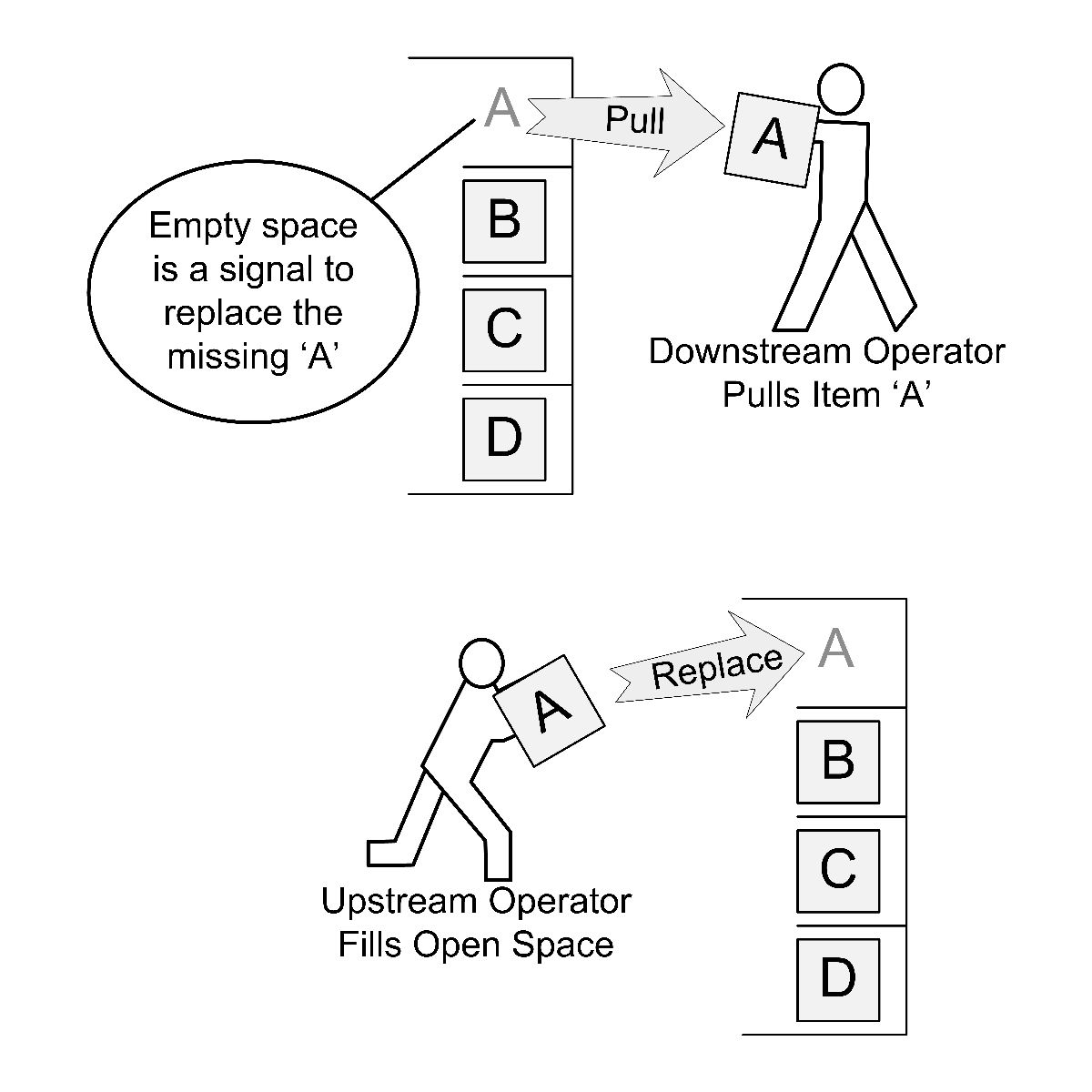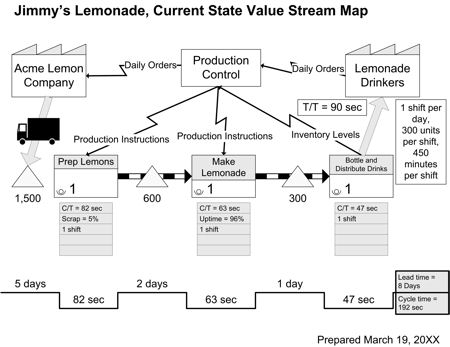Lean Terms
Pull System
A pull system (or pull production) is one in which items are only made, transferred, shifted, withdrawn, etc., when there is demand from a downstream customer. This sharply contrasts from a push system in which the downstream actions have no impact on what the upstream process is producing. Pull systems Read more…
Lean Terms
Upstream Processes
Lean often uses the analogy of running water. Making products move quickly and effortlessly is described as flow. Flow is often likened to straightening out a meandering river into a smooth, straight channel. The processes that get those products and services to the customer are known as the value stream. Read more…
Lean Terms
Downstream
Lean makes extensive use of the term flow. As a result, one of the most common teaching analogies Lean practitioners use is that of a meandering river being slowly but surely turned into a deep, straight, fast moving channel. That flow starts at the supplier and finishes at the customer. Read more…
Lean Terms
Value Stream Map
A value stream map (VSM) is a drawing that depicts the flow of material and information along a value stream. A value stream is the linked series of processes that brings a product from raw materials into the hands of the customer, or that provide a service to a customer. Read more…
Lean Terms
Current State Value Stream Map
The current state value stream map provides a 30,000-foot snapshot of how an organization operates. One of the unique aspects of this tool compared to others is that it shows the flow of both materials and information. This tool is extremely useful for a few reasons: It provides eye-opening insight Read more…
Lean Terms
TPS
TPS is the acronym for the Toyota Production System. TPS is more of a business philosophy than a production system, though. It focuses on manufacturing and logistics but doesn’t neglect the human aspect of production. TPS was founded in large part by Taiichi Ohno. TPS can trace its origins back Read more…
Lean Terms
Work, Standard
Standard Work is one of the core tools for Lean. It is most appropriate for use in repetitive, shop floor work areas, but can be modified to be used effectively in less structured work flows as well as in the office. Standard work has three main components. A prescribed sequence Read more…
Lean Blog-Gotta Go Lean
Collective Intelligence and Lean. How to Harness All of Your Team’s Brainpower
There is a theory called collective intelligence that says groups of people are smarter than individuals. Let’s look at a simple example of how this works. Imagine I listed the names of several states up on a board, and asked a room full of people to rank order the states Read more…

